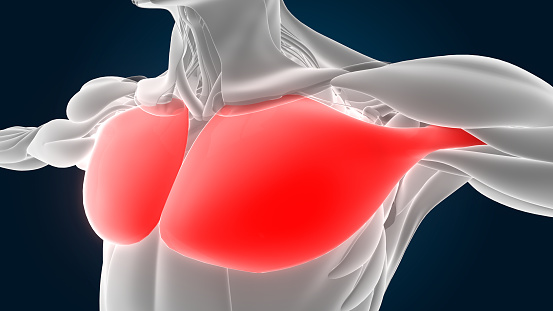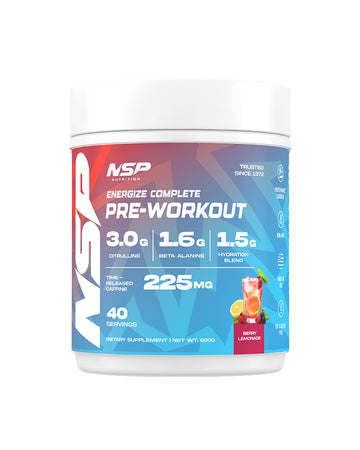
So you want to burn fat and get ripped, jacked, lean, in shape or whatever term you want to use but you don't quite know which of these two you should be doing or doing more of.
That's okay.
Anyone that has successfully shed fat or is looking to burn some fat has been in this dilemma at least once and that's totally understandable.
These two methods are great ways for burning calories and fat loss, and it would be easy for us to just come out and say that there's no clear winner, both are equally great if you want to lose weight, and you should try combining cardio and strength training for better results...
But...that's not what we're on about today.
The reason why you're here is that you want to know exactly which of these training methods is the best way for you to burn calories and shed fat so we're going to do exactly that:
Compare and contrast these two training methods objectively and the one with the most pros and least cons is the undisputed king of fat loss techniques.
Cardio enthusiasts believe that the best method of burning calories is by increasing your heart rate significantly. On the other hand, weight lifters believe that by increasing muscle mass, you can burn significantly more calories.
So today we're going to finally jump into the fray and throw in our 2 cents on which of these two training methods is best for fat loss based on
- Amount of calories burned
- Efficiency &
- Adaptability
Now that's over with, let's get started.

Cardio exercises are aerobic exercises, which means that they use oxygen to meet the body's energy demands during exercise.
Traditional cardio involves Steady state long duration cardio, or repeated cardio exercises with low to moderate-intensity workouts like
- Jogging
- Cycling
- Swimming
- Cycling
- Rowing...etc.
1. Amount of calories burned

You burn more calories with cardio
At least for a time.
Studies show that you burn the same amount of calories with cardio as weight training with about the same or even less effort and a shorter duration of time.
In other words, minute for minute, you burn more calories with cardio workouts.
In fact, you can even use your body weight to estimate how many calories you will burn after each cardio session.
Let's say you weigh 160 pounds or 73 kg. When you perform cardio exercises, you will burn about 250 calories per 30 minutes of jogging at a moderate pace.
If you were to run at a faster pace of 6 miles per hour, you would be burning around 365 calories by the half-hour mark.
On the other hand, if you weight trained for the same amount of time, you might only burn around 130–220 calories.
Weight training burns more calories over time

While cardio/ aerobic exercise might take a point on the number of calories burned per session, weight training allows you to burn calories days after a workout, even when you're not exercising due to a higher resting metabolic rate.
With weight training, your resting metabolic rate is significantly much higher because you're building muscle mass, and muscles are directly linked with resting metabolism because of the nature of the exercise.
Unlike cardio which is aerobic in nature, weight training is anaerobic, which means that oxygen alone is not enough to meet the body's energy demands.
To make up for this, glycogen that's stored in muscle mass is used to fuel the activity. The more you train your muscles and grow more muscle mass, the more glycogen you use up and the higher your resting metabolism will be.
Scoreboard: Cardio 1-1 Strength Training
2. Efficiency
You lose muscle mass with cardio exercises
Cardio might be good for burning calories in the short term, but it comes with one major downside; you lose fat and muscle mass as well i.e. cardio is catabolic to muscle mass.
Your body weight is comprised of two masses; the first is fat mass and the other is muscle mass.
When you do cardio exercises, you subsequently burn both fat and muscle mass indiscriminately and that's okay if you just want the number on the scale to drop regardless of what kind of mass you're losing.
However, this isn't often the case for most people as the reason why they're exercising is not only so they can lose fat, but gain muscle and build up a better body aesthetic.
Strength training allows you to build muscle and lose fat.

Traditional strength training workouts build muscle by using resistance training or weights while performing muscle contractions to build trigger muscle hypertrophy and build muscle.
This means for a better, well-rounded aesthetically pleasing physique, weight training is definitely better because it allows you to burn fat and build stronger muscles at the same time, making it the more efficient training method of the two.
Scoreboard: Cardio 1-2 Strength Training
3. Adaptability
You adapt much faster to cardio

Remember the first time you went for a run? Your heart was beating so fast you thought you might explode.
Turn to 3 runs later and you're running the same distance with considerably less effort.
Your heart adapts much quicker to the stress-induced on it by cardio and after a couple of sessions you find out that you hit your plateau pretty quickly and now have to increase the intensity of your cardio.
You plateau much slower with strength training
You don't really see people switching up their strength training exercises and resistance training routines every other week because it takes four to 16 weeks for your body to adapt to the stimulus and become more efficient at tolerating it.
Scoreboard: Cardio 1-3 Strength Training
Final Verdict; Cardio vs strength training

Overall, strength training/ resistance training is objectively better because it wins on the grounds of adaptability and efficiency.
Here's the recap:
- With cardio, you burn more fat in a shorter period of time and slightly less effort than with strength training.
- Strength training lets you keep your muscle, and even build stronger muscles, while burning calories.
On the other hand, cardio workouts burn both fat and muscle indiscriminately and while it may be good for weight loss overall, if you're looking to build a better aesthetic, you're better off doing strength training or weight lifting.
- You adapt fairly quickly to cardio. After one or two sessions your heart's beats per minute significantly increase and distribute more oxygen to your body as a result.
Remember, cardio exercises are aerobic in nature, which means they depend on oxygen distribution to meet the body's energy demands.
Winner = Strength training.
Because your heart adapts quickly enough to cardio this means that you have to keep adding more intensity more often than with strength training.
Conclusion
Objectively when you put these two training methods side by side, strength training is better, but it's actually much more complicated than that.
The simple answer is this; do whatever physical activity you enjoy doing because you'll be more consistent that way.
If you enjoy lifting weights and intense workouts, then by all means focus on strength training because it allows you to do what you actually enjoy; lifting weights.
On the other hand, if you prefer cycling, jogging, then doing more cardio would be best for you because you enjoy that particular activity.
Physical activity or any kind is good for burning calories and subsequent fat loss so as long as you're getting some exercise in, be it cardio workouts or resistance training, any one you enjoy the most, you're bound to reap the benefits.












































